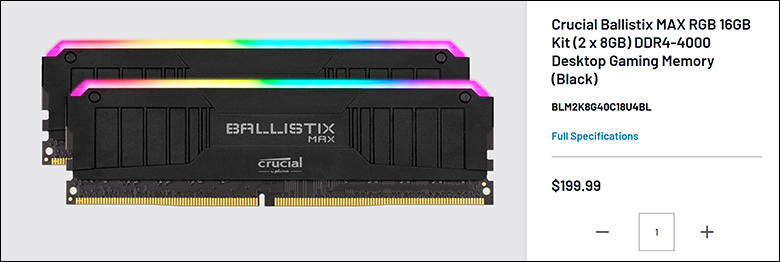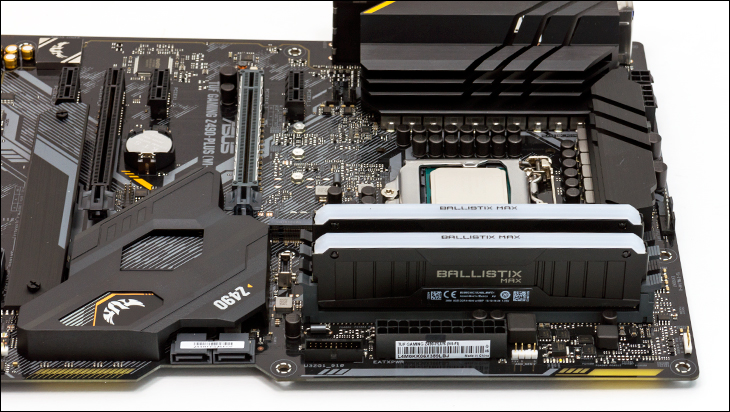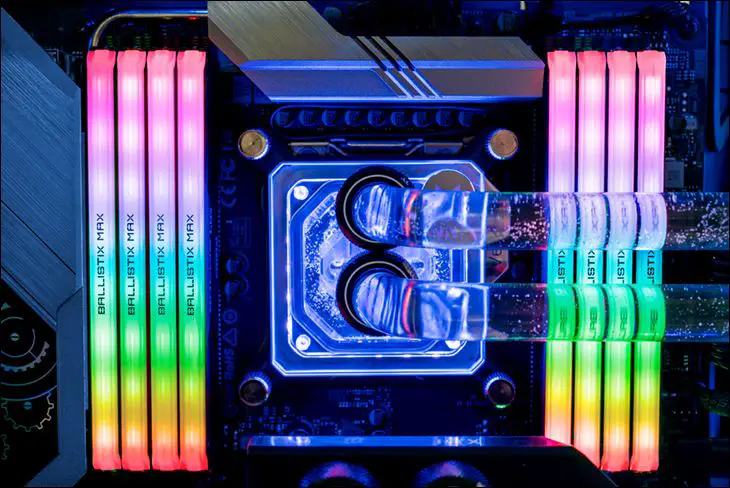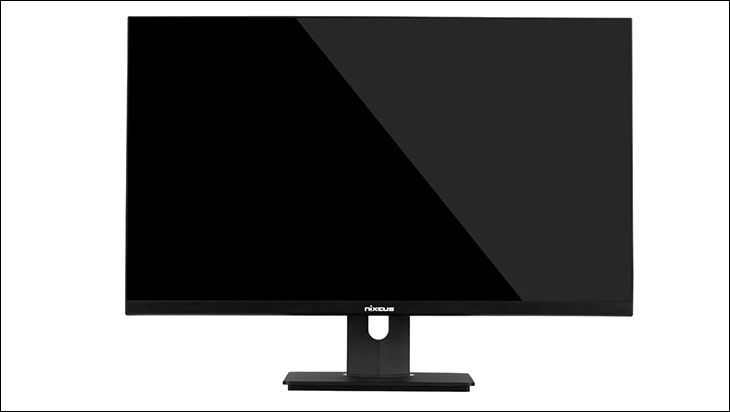
It should come as little surprise that the shipping container is not the same as the regular Gaming series. Instead of a cardboard sleeve with plastic inner clam-shell configuration, buyers of this premium product get a premium shipping container. One that is very, very reminiscent of what Elite buyers would get with their purchase.

To be precise you get a thick carboard container with a large double flap top cover and a thicker internal plastic clam-shell layer than what ‘lesser’ models get. Bluntly put, this is how all premium RAM kits should come housed in as it offers the best of both worlds: a large window to actually see the RAM before one has to buy it and yet offers great overall protection against both blunt force and cutting damage. So much so that even if you are a bit… over enthusiastic in cutting open whatever box the e-tailer placed this kit in, you are safe.

As the Ballistix MAX Desktop Gaming Memory line does (basically) supersede the Ballistix Elite series as the flagship series, a certain amount of comparison and contrast between the ‘old’ and ‘new’ is to be expected. It is actually safe to say that Ballistix’s engineers used the Elite blueprint and… refreshed it for the next generation. This is not a bad thing. The Elite series were some of the best RAM kits you could find. For their time, they offered overclocking performance, they offered excellent cooling, and they offered good temperature monitoring abilities.

All of which the Ballistix MAX series also offers… and then turns the dial up. To be precise Ballistix is using a great combination of Micron E-dies with on PCB Giantec temperature sensors. This is a great combination. Arguably as good as you are going to find in 8GB single rank sticks. However, if the RAM IC’s sound somewhat familiar… it is because they are. These are the ‘exact same’ RAM IC’s as the DDR4-3600 Gaming series makes use of… a series which can be found for as little as $75 (or $90 for the RGB variant). 2 bills vs. 1 bill is a steep increase.
Obviously, there are differences… but both start with the same RAM IC foundation. As we went over in that previous review, Micron bins up to DDR4-3200 at 1.2v and then either sells direct to manufactures (who then do their own binning to see how much profitonium they can bake in), or they hand them over to their consumer facing ‘arm’ (Crucial) for their own further binning process. Unlike Micron’s factory binning process Crucial uses 1.35v and bins all the way up to DDR4-5100 speeds. Needless to say… DDR4-5100 gets the best of the best of the best. In this instance, the DDR4-4000 RAM IC’s are of better quality than what is used in the standard Gaming Memory DDR4-3600’s but fairly similar and why you may see them labeled as Micron or Crucial. To really see a difference, one will have to step up to DDR4-4400 levels as that is big enough difference at 1.35v to actually see a noticeable difference when pushing both to 1.45v. Either way they are the same RAM ICs, it just depends on whether or not Micron/Crucial/Ballistix took the time to program the label ‘properly’ or not… or maybe even if Thaiphoon guessed right (it still mixes them up from time to time).

The upside to using these particular RAM ICs is twofold. Firstly, Micron 19nm E-dies may not have been designed with overclocking (and rather were meant to be cheaper to produce than the older large node size based B-dies)… but that does not stop them from being excellent overclockers. They simply are better. Less temperature sensitivity. Less drama when the voltages are pushed… just better. More importantly, if you have any experience with “Crucial” C9BKV’s you know how they are going to react and can work on dialing things in using your previous experience as a starting point. As for the downside? We will go over it in the overclocking section… but sometimes more is not necessarily better in the real-world.

Moving on. The weakest link of the Elite series was its overall aesthetics. Do not get the wrong impression. They were rather pretty and very elegant… they just took the Henry Ford approach to options and “Any customer can have any color that (s/)he wants, so long as it is black”. That was fine when DDR4-3600 was bleeding edge (though they actually did release a DDR4-4000 kit that few took note of). Nowadays DDR4-3600 is mid-tier and consumers are not willing to make nearly as much sacrifices even at DDR4-4000 speeds.

To help woo back some potential buyers, Ballistix may still only offer their Eli… err… MAX series in black but they have tweaked the formula rather extensively. First and foremost is the top of each stick’s heat spreader is no longer metal. Now it is high temperature plastic. Furthermore, it is held in place with two pins and they offer the STL file so that you can print your own in any color you wish.

Then next change is that some of the MAX Gaming kits are offered with the exact same 16 RGB LEDs (8 per side of the PCB in a total 8 individual controllable clusters of 2) as the Gaming Memory series. Obviously, this means the solid colored topper is swapped out for a white diffuser ‘glow bar’ type affair… but it sure is purdy. It really does take the Max series to the next level as the glow bar is wider and thus the ‘glow’ is much, much more optimal compared to the narrower and more focused standard Gaming Memory variants. It is just too bad that only DDR4-4000 to DDR4-4400 kits get this lighting option.

The heat spreaders themselves have also been upgraded. While yes, they are the basically the same thickness as the Elites, they weigh more. They weigh more as they are solid chunks of aluminum that lack the cutouts of the previous Elite design. In theory the cutouts were to promote passive airflow around the RAM ICs, in reality their added girth made any additional passive airflow negligible at best as they are stacked so close together in your boards DIMM slots. In other words, to actually take advantage of this feature you had to use active cooling to really make a difference. Since few bother with active cooling configurations these days a thicker heatsink with nicer shallow fins / deep grooves makes more sense. Increased surface area works no matter how little or lot of air moves around the heat spreaders.

Overall, the newer MAX Gaming is a nice upgrade over the older Elite series. Certainly not perfect, and certainly with a few quirks carried over… but nice never the less.









